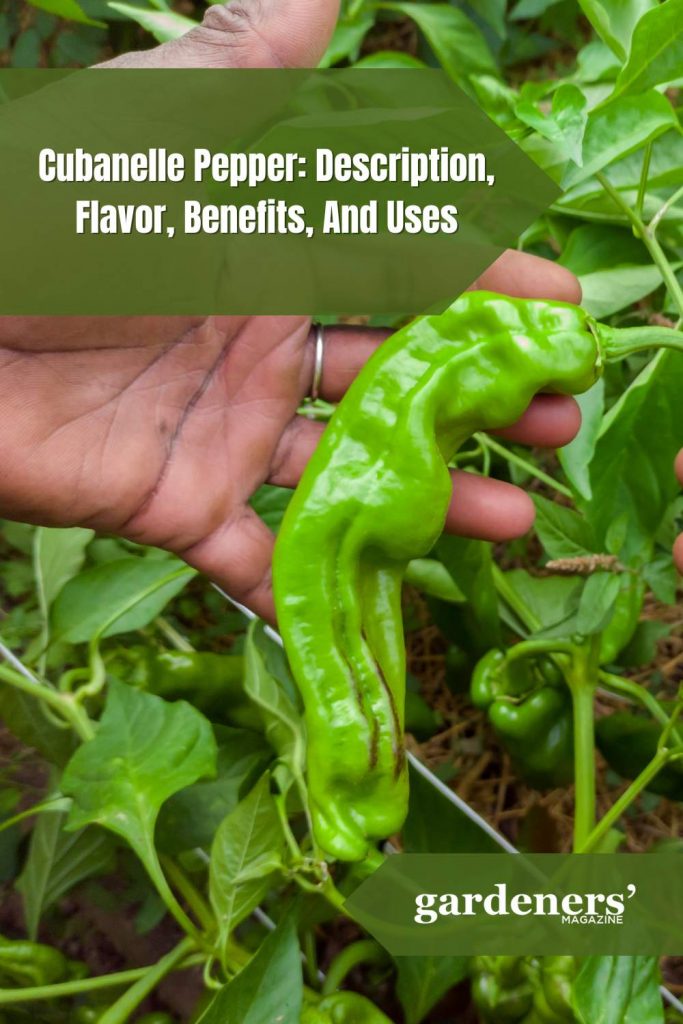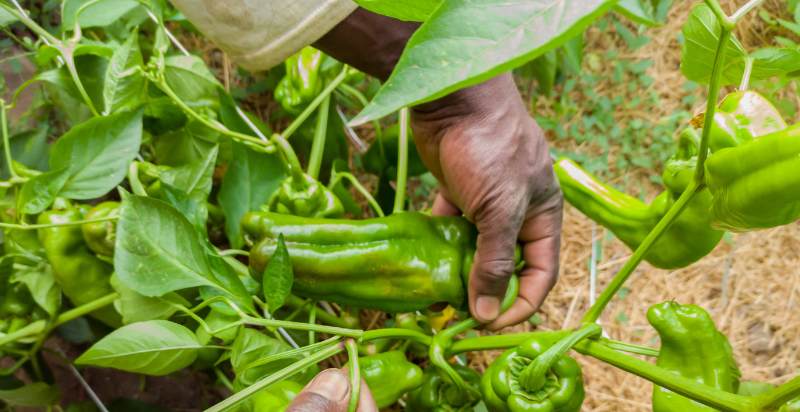The Cubanelle pepper is a unique, slender-shaped pepper that has become a favorite among home gardeners and chefs. Native to the Caribbean islands, this sweet pepper is widely used in Italian cooking as a stuffing or seasoning for dishes like pizza and pasta. With its low heat level and signature sweet flavor, the Cubanelle pepper has quickly become a popular ingredient in many cuisines worldwide. This article will provide all the information you need about the Cubanelle pepper – from its nutritional benefits to its culinary uses.
What is a Cubanelle pepper?
Cubanelle peppers are slender, light green peppers that range from six to nine inches long. They have a mild, sweet flavor, little heat, and a slightly crunchy texture. This pepper is also known as Italian frying because it is often used to make stuffed dishes like calzones and pizza pockets. It has a low Scoville rating of 500-1000 SHU, significantly milder than jalapenos or poblanos.

History and Origin of the Cubanelle Pepper:
The Cubanelle pepper has its roots in the Caribbean and Central America. The plant was first brought to Cuba from Spain, where it became popular among farmers for its mild flavor and resilience to disease. The peppers later went to Mexico, South America, and North America. They are now widely grown in California, Florida, and many countries worldwide.
Appearance of Cubanelle Pepper:
Cubanelle peppers have long, slender fruits that are usually around six inches long. They typically start as green but eventually ripen to a red hue if left on the vine long enough. Cubanelles develop a mild smoky flavor when dried and darken to an orange-red hue. Their skin is thin and easy to remove once cooked.
Flavor Pofile of Cubanelle Pepper:
Cubanelle peppers have a mild, sweet flavor, making them versatile in the kitchen. They are not as spicy as traditional chilies, instead having notes of bell pepper and subtle hints of sweetness. As they mature, Cubanelle peppers become sweeter and more orange-red. When fried or roasted, their flavor deepens to a smoky sweetness ideal for adding complexity to dishes.
Plant Characteristics of Cubanelle Pepper:
Cubanelle peppers are a type of sweet pepper that grows 6-10 inches long. They have an elongated shape and dark green skin. As they mature, the peppers develop a mild smoky flavor and darken to an orange-red hue. Their skin is thin and easy to remove once cooked. The plants can get up to 3 feet tall with deep green foliage. When ripe, Cubanelle peppers will hang off the plant in clusters, making them easier to harvest.
Health Benefits of Cubanelle Pepper:
Cubanelle peppers are a great source of vitamins and minerals. They contain vitamins C, A, and B vitamins, potassium, iron, magnesium, and calcium. Cubanelle peppers are also low in calories, making them an ideal addition to any diet.
Eating Cubanelle peppers can help boost the immune system with their high antioxidants and anti-inflammatory compounds. They may also help lower the chance of developing some cancers because of the phytonutrients they contain.
Where is Cubanelle Pepper Grown and Harvested?
Cubanelle peppers are native to the Caribbean and tropical climates, but they can also be grown in cooler climates as long as they get plenty of sunlight. Cubanelle peppers can be found in many local grocery stores or farmer’s markets.
The most common way to harvest them is by handpicking when they are ripe and then drying them before storing them. Some farmers may use mechanical harvesters, which help speed up the process and make it easier to collect many peppers at once, thus making them easier to harvest. Cubanelle peppers can also be grown indoors in containers with proper ventilation. They can yield a large amount of pepper all year round with proper care.

Where can the Best Quality Cubanelle Pepper be found?
Local farmers’ markets are a great place to start. The peppers are usually sold in bunches and will have the brightest colors and freshest flavor possible. When buying from the grocery store, look for peppers that have unwrinkled skins with no soft spots or discoloration. These will be the most ripe and flavorful peppers available. To avoid spoilage, cubanelle peppers should be kept in a cool, dry location away from direct sunlight.
What is the best way to Store Cubanelle Pepper?
Frozen pepper slices will keep for several months but may lose some flavor and texture when thawed. If you want a longer storage option, dehydrated pepper flakes can be made by drying the peppers on racks at low temperatures until completely dry. The dried flakes can then be kept in an airtight container for up to a year.
What are some ways to use Cubanelle Pepper?
Cubanelle peppers are a versatile ingredient that can be used in many different dishes, both sweet and savory. When combined with other fruits and vegetables, they add a unique flavor and texture to meals. Here are some ways to include Cubanelle pepper with other ingredients:
- Stuff them with mushrooms, onions, garlic, cheese, and tomatoes for an easy and tasty main dish.
- Add them to omelets and scrambled eggs for a flavor boost.
- Mix with mango, avocado, jalapeño, and cilantro for a unique salsa.
- Roast with other vegetables such as potatoes and carrots for a delicious side.
- Grill them with pineapple, onion, and bell pepper for an amazing kabob.
- Bake into quesadillas or pizza for a unique twist on classic recipes.
- Slice them into thin strips and add to a stir-fry for an extra layer of flavor.
These are just some of the many options for incorporating Cubanelle peppers into your cooking.
Conclusion:
Cubanelle peppers are an excellent source of flavor and nutrition. Not only are they delicious when raw, but their smoky sweetness develops further with cooking. They can be stored in an airtight container for up to a year, making them a great pantry staple. With endless ways to cook or enjoy Cubanelles, you’ll never tire of this versatile pepper.
- Water Berries: Description, Flavor, Benefits, And Uses - June 18, 2024
- Everything You Wanted To Know About Sweetheart Cherries - June 17, 2024
- Indian Jujube: Description, Flavor, Benefits, And Uses - April 30, 2024

3 thoughts on “Cubanelle Pepper: Description, Flavor, Benefits, And Uses”
Comments are closed.